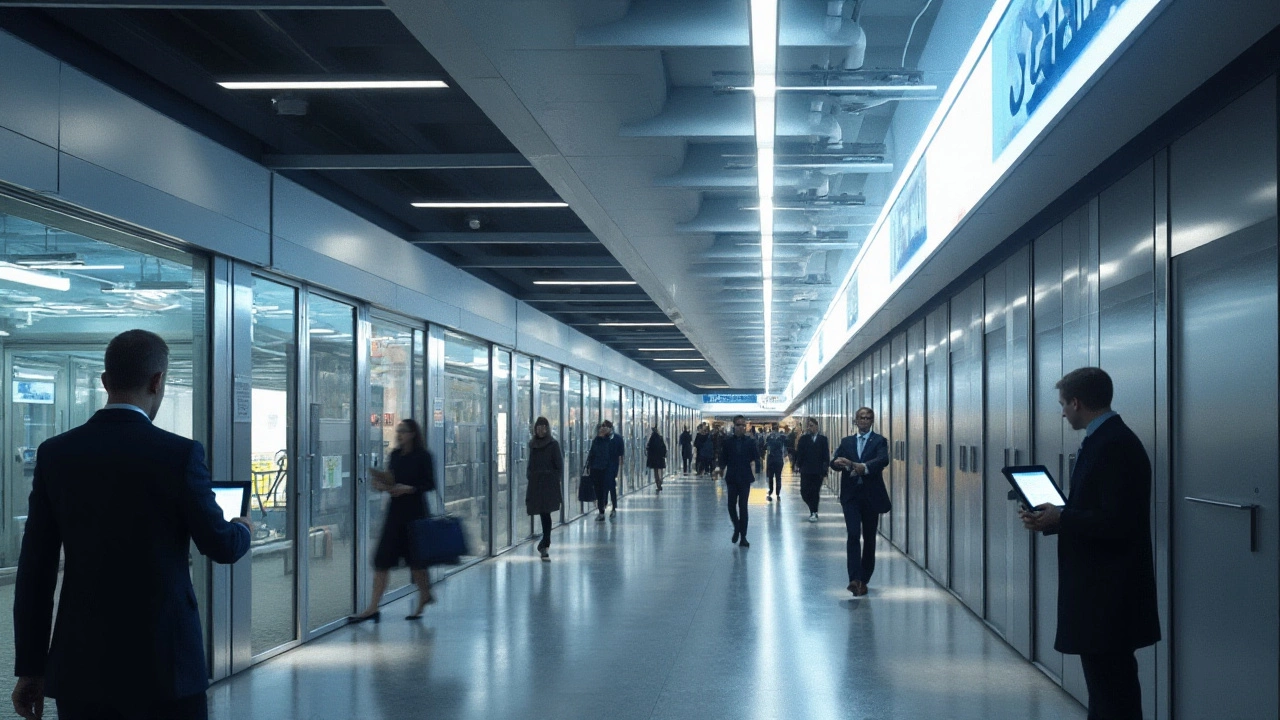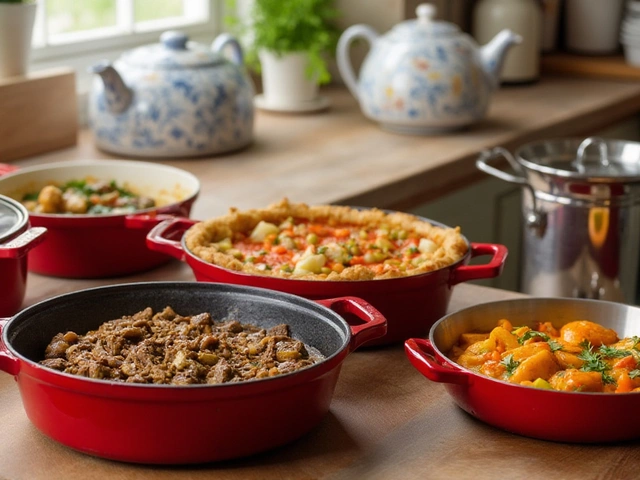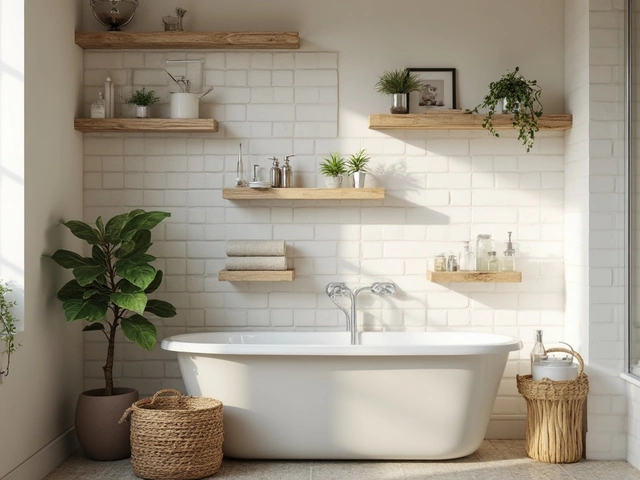Finding the right storage solution can be a tricky pursuit, often raising the question: How much is it going to cost me annually? Many factors come into play when assessing storage expenses, including the type of storage you choose and where you are located in the world.
Whether you are downsizing, facing a life transition, or simply need extra space to keep your things safe, understanding the potential costs is essential. By exploring the various factors that impact storage prices and trying to navigate how different options fit into your budget, you can better prepare for the future.
This article aims to guide you through the nuances of storage pricing, giving you the confidence and knowledge to pick the best solution for your needs while keeping those dreaded hidden fees at bay.
- Factors Affecting Storage Costs
- Types of Storage Solutions
- Price Comparison by Region
- Tips for Reducing Storage Costs
- Long-term vs Short-term Storage
- Choosing the Right Storage Option
Factors Affecting Storage Costs
When saving money on storage, understanding what drives those costs can make a big difference in your bank balance. Location is often the first thing people consider when determining storage costs. Urban areas, bustling with activity and limited space, generally have higher prices compared to rural settings with sprawling land and cheaper rent. The convenience of being central can add substantial dollars to your invoice.
Next up is the undeniable role of the storage unit's size. A 5x5 locker in a facility could suffice for decluttering a closet, but those needing space for an entire house might seek something tenfold. The price tag swell with size, and finding the sweet spot for what you stash is crucial. Equally influential is the type of storage solutions selected: climate-controlled spaces ensure your prized possessions remain unaffected by the weather but at a premium rate. It’s like treating your items to first class rather than coach on a flight.
Security features often affect costs too. Units equipped with video surveillance, individual alarms, and electronic access control might charge more, but they guarantee peace of mind. That old adage, you get what you pay for, rings true here. Another consideration is the lease duration. Opting for long-term contracts might land you discounts, but those eyeing short-term alternatives could face higher monthly fees. Being clear about your timeframe can save or cost you significantly.
According to a study conducted by the Self Storage Association in 2023, approximately 38% of American households rent a self-storage unit. As more people accumulate belongings over time or transition to remote work, demand increases, which can also push prices up.
The Self Storage Association stated, "The storage industry has grown considerably over the past decade, with consumer needs varying from simple seasonal storage to complex business inventory management."
Moreover, seasonal factors impact pricing, especially in regions with harsh weather conditions. Think twice about booking a heated unit during winter snowstorms as availability becomes a hot commodity. Also, be mindful of specials and promotions that facilities may offer throughout the year. While these can offer temporary relief, they often revert to standard rates, usually higher after an introductory period elapses.
Expenses on storage might not always fit neatly into a fixed pattern, and there are always hidden fees lurking, such as mandatory insurance or maintenance charges. Therefore, scrutinizing contracts and asking every plausible question becomes not only wise but necessary. With a keen eye and a discerning mind, you can navigate the complexities of cost analysis in storage, ensuring your belongings are safely housed without blowing your budget.
Types of Storage Solutions
When it comes to finding the right storage solution, the sheer variety of options available might seem overwhelming at first. But having a clear understanding of what's out there can turn this daunting task into a well-informed decision. There are primarily three types of storage solutions that individuals and businesses frequently use: self-storage facilities, portable storage units, and full-service storage.
Self-storage units are perhaps the most commonplace and convenient option for those who need regular access to their possessions. These typically come in various sizes, allowing you to choose a unit that fits your needs. Most facilities offer around-the-clock access, which is perfect if you need to retrieve or add items at odd hours. It's a great choice if you have the time and means to transport and organize your belongings yourself.
On the other hand, portable storage is gaining popularity for its flexibility. Companies like PODS and U-Haul have popularized this method, delivering a storage container to your doorstep that you can fill up at your own pace. The container can then be stored on your property or transported to a secure location provided by the storage company. It is especially handy during long-distance moves or when undergoing home renovations, allowing ease of transportation. A quote from the American Moving & Storage Association noted,
'Portable storage offers the convenience of at-home loading, a critical factor during the stress of moving or remodeling.'
Full-service storage solutions offer an elevated level of convenience. In this scenario, a team does everything for you—picking up, cataloguing, storing, and, when you need, delivering your items back to you. This premium service, often accompanied by a higher price tag, is suitable for busy individuals, families, or businesses who value time and security over cost. This is especially true for those living in populous cities where space is scant, and traffic congestion is a significant concern.
In addition, the rise of climate-controlled units presents another significant consideration. These storage units regulate temperature and humidity, essential for preserving delicate items such as antiques, electronics, or documents. Statistically, climate-controlled units can increase storage prices by 20% to 50%, but the investment could be well worth it if you're protecting valuables. According to the Self Storage Association, 30% of all new facilities feature climate-controlled options, catering to those needing extra care for their possessions.
Considering various storage solutions by this point, you might be jotting down pros and cons for each. The choice truly hinges on your specific needs: accessibility, budget, item sizing, and the extent of service you require. Whether you're seeking a simple way to declutter your garage or require specialized care for precious belongings, knowing these storage types offers a clearer path to finding the right fit for your needs.

Price Comparison by Region
When diving into the realm of storage solutions, you'll quickly realize that the cost of storing your belongings can vary significantly depending on where you live. In metropolitan areas like New York City or San Francisco, the price per square foot for storage is often much higher when compared to more rural locations. This discrepancy is largely due to real estate prices, operational costs, and demand for storage spaces in densely populated areas. For instance, a 5x5 unit in Los Angeles might cost you almost twice as much as the same unit in Knoxville, Tennessee. This can make a significant difference in your annual storage expenses.
To help break it down a bit more, let's consider a few major regions. On the West Coast, cities like Seattle have seen a surge in storage unit prices due to increasing population density and limited space. Meanwhile, in the Midwest, cities like Indianapolis offer much more affordable rates due to lower property costs and less competition for available storage. The Southern United States, with cities like Austin and Atlanta, typically strikes a middle ground. Storage facilities there offer moderate pricing, yet they reflect the area's growing popularity and urban development.
In Europe, London stands as one of the pricier hotspots for storage solutions, mainly due to its considerable urban sprawl and premium space constraints. Meanwhile, if you travel to Eastern Europe, you'll find that storage units are considerably cheaper. This variance is influenced by lesser demand and more available space. In the words of property expert Margaret Willis, "The cost of storage is inherently tied to the cost of living in each region. More people equals more stuff, which means higher costs to store it all."
Many find it valuable to graphically understand the differences, therefore, here's an illustrative example of how storage solutions compare in select cities:
| City | Average Monthly Cost for a 10x10 Unit |
|---|---|
| New York City | $230 |
| Chicago | $120 |
| Houston | $95 |
| Las Vegas | $80 |
What's crystal clear is the significant impact that regional factors can have on the storage costs you incur. For those considering storage, especially long-term, it's vital to weigh whether your current location provides the best value for money. Those fortunate enough to have flexibility in location may save substantially by choosing a base where the cost per square foot aligns more closely with their budget. All the same, understanding these price dynamics empowers renters to make decisions that suit their specific storage solutions and budgeting requirements.
Tips for Reducing Storage Costs
Storing your belongings safely without spending a fortune is a goal for many people. It can often seem that storage costs dictate what and how much we can store. However, there are several smart strategies that can help you reduce storage costs while still meeting your needs. One of the most impactful methods is to start by thoroughly assessing what you really need to keep. Conduct a thorough inventory of your items and make tough decisions about what is genuinely essential to keep, what can be donated, and what should be discarded. By reducing the quantity of items you're storing, you may need less space, which can significantly lower your expenses.
Another effective approach to cut costs is researching and comparing prices from various storage solutions in your area. Different facilities offer different prices based on size, location, and amenities. Take the time to visit a few, ask detailed questions about their pricing structures, and read reviews from other customers to gather a comprehensive understanding of what each service can offer. Some facilities might offer discounts for long-term rentals or advanced payments, so it's worth inquiring about those options. You might also consider using unused space within your own home first to avoid additional payments.
Consider sharing a storage unit with a friend or relative who also has items to store. Splitting the costs with someone you trust can effectively halve your rent while maximizing the use of the space. Additionally, there are new services emerging where people rent out extra space in their homes or garages, often at lower prices than traditional storage units. Exploring these peer-to-peer storage options could present a viable alternative that expands your choices beyond conventional storage facilities.
Packing strategically can also be a cost-saving measure, placing emphasis on how efficiently you use your allocated space. Invest in boxes that fit well together, and pack them carefully so that you minimize wasted space. Consider vertical storage options or shelving to maximize the height of your unit. “When you store vertically, you effectively double the usable space,” notes an industry expert from SpareFoot.
"Efficiency in packing is your best friend if saving money is the goal,"advises the expert, suggesting to think of it like playing a game of Tetris, where every square foot comes into play.
Finally, staying organized within your storage can prevent unnecessary costs. Label all boxes to avoid the need to rummage through your collection and disturb your organized stacking, which might require renting larger units in the future. Sometimes facility costs go beyond renting space; additional charges for insurance coverage should also be considered. Make sure to check your homeowner’s insurance policy if it covers stored items, which could eliminate the need for separate storage insurance.

Long-term vs Short-term Storage
Deciding between long-term and short-term storage is crucial, as it significantly impacts the total cost and type of storage you might opt for. Short-term storage usually caters to temporary needs like moving homes, renovating, or storing items seasonally. You can expect to use these services for a few months at most, and flexibility is often the top priority. Facilities offer rolling contracts, meaning you’re not tied down, which is perfect if your living situation is in flux. However, because of this flexibility, costs might be higher per month compared to long-term rentals. On the other hand, long-term storage is typically more economical if you need to keep your belongings tucked away for a year or longer. This option suits individuals downsizing permanently, traveling for extended periods, or requiring extra space for items you won't use for some time. Facilities might offer discounted rates for long-term commitments, translating to savings that short-term agreements don't provide.
One insightful fact about storage solutions is the differentiation in security measures between short-term and long-term units. As short-term users often frequent the facility, security might be less stringent in certain cases focusing merely on monitoring and access hours. In contrast, long-term storage units often boast advanced security features, including gated access, surveillance cameras, and sometimes even on-site guards to ensure peace of mind for lengthy periods of absence. The price often reflects these enhancements in security standards, pointing out the diverse nature of offerings available today.
A wise woman once said,
"The main value of long-term storage is preserving the things you love, even when they don't fit into your current phase of life." – Marie KondoEminently helpful is considering insurance and protection plans for both options. Short-term solutions should at least include basic insurance covering damage or loss for sudden life changes. Long-term storage, however, warrants a more comprehensive approach, ensuring that valuable collections or antique pieces are thoroughly protected. Evaluate the storage cost against factors like climate-controlled options, especially for sensitive items that may become the casualty of temperature fluctuations over time. A strategic assessment of what you’re storing and for how long will help balance the costs.
Let's put these options into perspective with a simple cost table based on general observations across cities, illustrating how varying terms can affect your budget:
| Type of Storage | Average Monthly Cost | Additional Notes |
|---|---|---|
| Short-term Unit (5x5) | $70-$90 | Includes flexibility, month-to-month lease |
| Long-term Unit (5x5) | $50-$70 | Discounted rates for annual contracts |
In essence, your choice between long-term and short-term storage should reflect your unique circumstances, balancing both your storage needs and economic considerations. Understanding these differences not only helps optimize your storage budget but also provides more peace of mind in knowing your belongings are secure and accessible at your convenience. When exploring these options, it's pivotal to discuss your requirements in detail with prospective storage providers to ensure all your criteria are met and that your storage solution seamlessly integrates into your life plan.
Choosing the Right Storage Option
When it comes to selecting a storage solution that's perfect for you, the decision can feel akin to finding the right pair of shoes—you want style, comfort, and affordability all rolled into one. Understanding the variety of storage solutions available can make the journey less daunting. Storage costs are influenced heavily by the type of storage you opt for, whether that's self-storage, full-service storage, or even portable storage units. Each of these options comes with its own set of pros and cons tailored to specific needs, situations, and, of course, budgets. The first step is identifying what you need to store, as this will largely shape your decision. Are you storing priceless family heirlooms or just excess furniture? The nature and value of your items can guide you toward the right choice.
Self-storage units are one of the most popular options due to their flexibility and ease of access. These facilities are ideal if you plan to access your belongings frequently. They come in various sizes and are priced based on square footage, which inherently affects cost analysis. For those who prefer a more hands-off approach, full-service storage might be the way to go. These services pick up, store, and even return your items upon request, though this convenience often comes at a premium.
"Full-service storage is the valet parking of the storage world," according to experts at Storage Access. "It's perfect for those with busy schedules who value flexibility over direct access."
Then we have portable storage units, which blend the benefits of both self-storage and full-service storage. These units are delivered to your doorstep, allowing you to pack at your own pace. Once packed, the storage company can store it off-site or leave it at your location, offering a unique flexibility that suits temporary storage needs, such as during renovations or moves. While not every option suits everyone, understanding how each works helps demystify the costs associated. Consider aspects like accessibility, security, and insurance options, which can vary widely between providers. A well-informed decision not only saves you money but ensures your belongings remain safe and in good condition.
Sometimes, digging a bit deeper into customer reviews can reveal hidden gems about service quality and management integrity, pushing you toward making the best choice. Familiarize yourself with local storage providers to compare prices and features adequately. It might be worthwhile to note any seasonal discounts or promotional offers, which can trim down storage costs. Odds are, with the right information and a little patience, you'll find a storage option that fits your needs as snugly as your favorite pair of well-worn shoes—a bit of style, a touch of comfort, and plenty of functionality.







